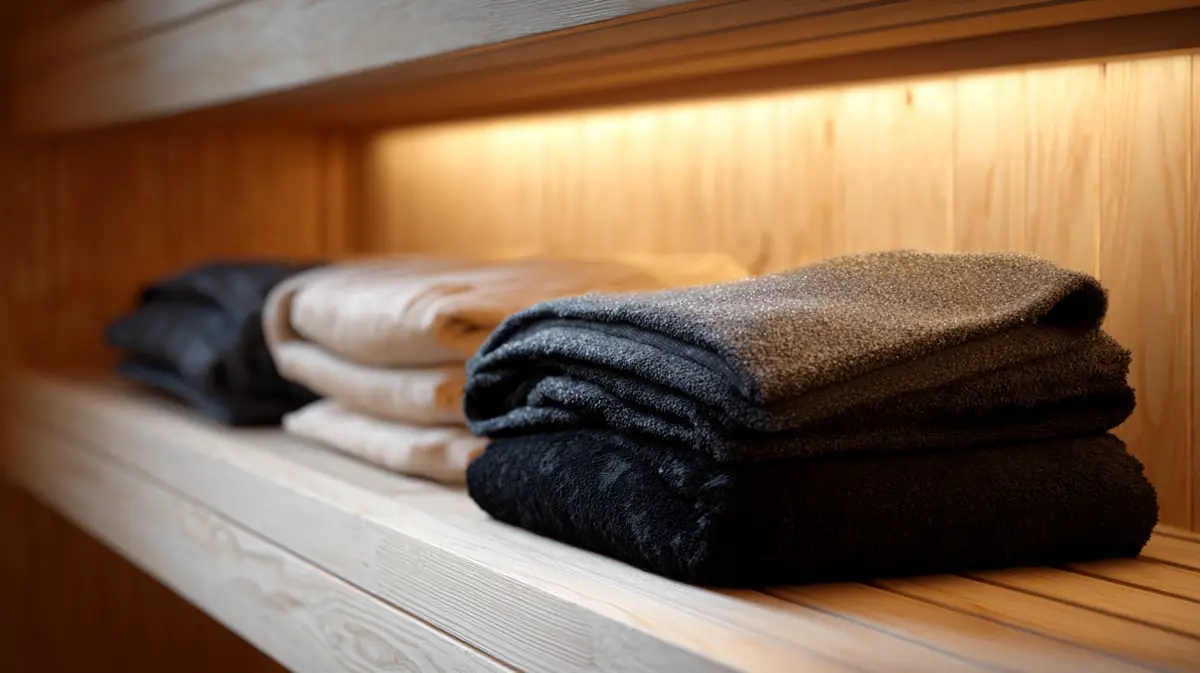The Role of Clothing in Enhancing Heat Therapy Benefits

Heat therapy works best when your body stays warm and comfortable. The right clothing helps you hold onto that heat, making every session more effective. From boosting circulation to keeping your skin safe, your clothes do more than you think. Let’s explore how smart clothing choices can level up your heat therapy experience.
Key Takeaways
● Choose clothing that traps heat well to improve the effectiveness of heat therapy.
● Wear layers and snug fabrics to help spread warmth evenly and reach sore muscles.
● Use moisture-wicking clothes to stay dry and comfortable during heat sessions.
● Compression and thermal garments can boost blood circulation and speed healing.
● Pick soft, breathable fabrics to protect your skin from irritation and burns during therapy.
The Role of Clothing in Enhancing Heat Therapy Benefits
Improves Heat Retention
Clothing plays a crucial role in making heat therapy more effective by holding warmth close to the body. Fabrics like wool, fleece, and certain synthetic blends trap heat better, keeping the temperature steady. Wearing layers or insulated clothing helps maintain consistent warmth, preventing heat from escaping quickly. Items such as thermal shirts and snug sleeves offer extra protection by reducing heat loss. Good insulation works like a barrier, slowing the transfer of heat to the cooler environment. Plus, well-designed clothing can help spread warmth evenly, ensuring your body benefits from heat therapy longer and more comfortably.
Enhances Heat Distribution
Clothing influences how evenly heat spreads during therapy. Materials like cotton blends and stretchy fabrics allow warmth to move smoothly across the skin. When heat spreads evenly, therapy becomes more effective, reaching sore muscles and tissues without hotspots. Tight-fitting clothes or layered garments push heat deeper, helping it penetrate beneath the surface for better relief. The design of clothing also matters; well-fitted pieces prevent heat from pooling in one spot, encouraging an even temperature across larger body areas. Using multiple layers can regulate heat flow, making your therapy more comfortable and consistent.
Boosts Blood Circulation
Heat-retaining clothing can increase blood flow, which helps muscles heal faster. Thermal wear keeps your body warm even in cold environments, reducing the risk of poor circulation. Combining heat with compression garments speeds up this effect by gently squeezing muscles and veins, pushing blood through more efficiently. Infrared clothing takes this a step further by emitting rays that penetrate deep into tissues, enhancing circulation better than regular thermal fabrics. Warm clothing also directs more blood to your hands and feet, keeping extremities healthy. Consistent use of these garments may even ease chronic circulation problems over time.
Provides Moisture Management
Moisture management means controlling sweat and dampness in clothing to keep skin dry and comfortable. This is important during heat therapy because sweat can cool the skin too much or cause irritation. Some fabrics, like polyester blends and specialized sports textiles, wick sweat away from your body while still holding heat. By managing moisture, clothing helps maintain an ideal skin temperature, preventing discomfort. Good moisture control also stops bacteria and fungi from growing, which lowers the chance of skin infections during therapy. Choosing clothes that balance heat retention and sweat-wicking boosts both comfort and safety.
Increases Comfort and Mobility
Clothing designed ergonomically supports your movement during heat therapy, making sessions more enjoyable. Specially made garments with stretchy panels or seamless construction reduce friction and allow natural motion. Compression clothes offer support while keeping muscles warm, which helps you move without pain. Smart textiles take comfort up a notch by adjusting to your body’s needs, such as cooling down when you sweat. Moisture-wicking fabrics keep you dry, enhancing comfort during active therapy. Heated clothing not only warms muscles but also eases soreness, promoting relaxation and better mobility throughout your treatment.
Protects Skin from Irritation
During heat therapy, clothing shields your skin from irritation and burns. Without proper layers, direct heat can cause discomfort or even damage. Soft, breathable fabrics like bamboo or cotton blends reduce friction and minimize redness. Moisture-wicking materials are especially helpful because they keep sweat away, preventing rash and irritation. Avoid synthetic or rough-textured clothes that might worsen skin reactions. Layering clothes over heat sources acts as a buffer, protecting your skin by spreading heat more gently. Choosing the right garments is key to safe and comfortable heat therapy sessions.
Supports Thermal Insulation
Clothing, including sauna clothing, enhances thermal insulation by trapping warm air close to your skin during therapy. This helps keep your body temperature stable, allowing heat to work deeper into tissues. Materials like fleece, wool, and insulated synthetics provide excellent heat barriers. Layering clothes builds thicker insulation, creating pockets of warmth that slow heat loss. The fit of your clothing also matters, snug clothes prevent cold air from entering, boosting insulation. By supporting thermal insulation, clothing helps maintain the therapeutic warmth longer, improving overall treatment outcomes and keeping you cozy throughout.
Promotes Longer Therapy Sessions
Wearing heat-supportive clothing often encourages people to enjoy longer therapy sessions. When you feel warm and comfortable, you’re more likely to stick with your routine. Cozy garments add psychological comfort, making therapy feel pleasant rather than a chore. On the flip side, improper or itchy clothes can cause discomfort, cutting sessions short. Moisture-wicking fabrics play a role too, by managing sweat and keeping you dry, which supports longer use. Heated clothing offers a modern alternative to traditional heat packs, allowing uninterrupted and extended therapy that fits better into your daily life.
Facilitates Targeted Heat Application
Some clothing is specially designed to apply heat exactly where it’s needed. These garments use adjustable zones to control temperature in different areas, offering personalized therapy. Smart fabrics can generate and maintain heat in specific spots, maximizing treatment effectiveness. Insulating layers within the clothes help trap heat around target muscles or joints. Infrared heating technology goes further by directing warmth deep into tissues for focused relief. Well-engineered heat clothing ensures consistent and precise heat application, making therapy more efficient and tailored to your body’s needs.
Maintains Hygiene and Durability
Heat therapy clothing also helps keep hygiene in check by acting as a clean barrier between your skin and external dirt. Fabrics with antimicrobial properties, like silver-infused textiles, reduce bacterial growth during treatments. Reusable clothing designed for heat therapy lasts through multiple sessions when cared for properly. Durable materials such as nylon blends withstand frequent washing without losing effectiveness. Regular cleaning is important, but it should not wear out the garment quickly. Finding the right balance between hygiene and durability ensures your heat therapy clothing remains safe, effective, and long-lasting.
FAQs
How does the fit and compression level of clothing influence the effectiveness of heat therapy?
The fit and compression of clothing greatly impact heat therapy. Tight clothes trap heat close to the skin, enhancing retention, while compression boosts blood flow for faster healing. However, too-tight clothes can hinder circulation and reduce benefits. The key is finding a comfortable, snug fit that balances heat retention and circulation for effective therapy.
Are there specific fabrics that interact with heat therapy to offer additional therapeutic effects?
Clothing made from the right fabrics can boost heat therapy’s benefits. Natural fibers like cotton and wool gently hold heat while letting skin breathe for comfort. Advanced materials with minerals like tourmaline or smart coatings reflect and amplify your body’s heat, enhancing healing. Some fabrics also reduce inflammation, making heat therapy more soothing and effective. Choosing the right fabric makes heat therapy stronger and more comfortable.
Can layering garments affect the outcome of heat therapy treatments?
Layering clothes improves heat therapy by keeping warmth close to your body and maintaining steady heat levels. However, too many or overly thick layers can block heat from reaching your skin and cause overheating, reducing effectiveness and comfort. Balance is key for safe, effective heat retention.
How does the use of clothing in heat therapy vary across different body regions or injury types?
Clothing impacts heat therapy effectiveness by matching body areas and injury types. Thick, insulating fabrics retain heat well on the back, while stretchy materials like spandex suit the knee for movement and warmth. Lightweight, breathable clothes work best for the shoulder to prevent overheating. Loose clothes ease muscle strains, while tighter, supportive fabrics help joint injuries. Softer materials suit chronic injuries, and adjusting clothing thickness aids heat penetration for deep tissue issues. Choosing the right clothing enhances heat therapy benefits.










